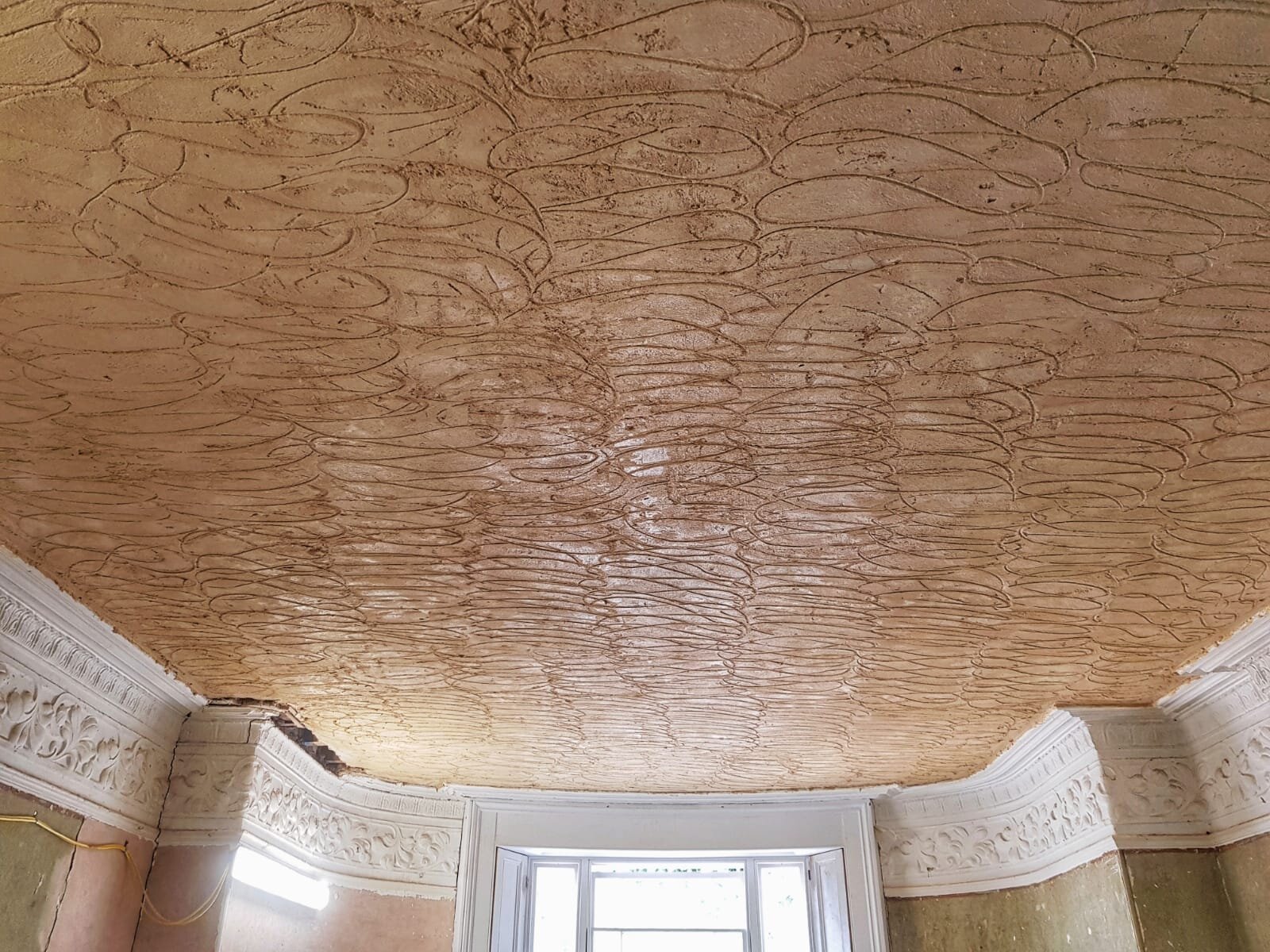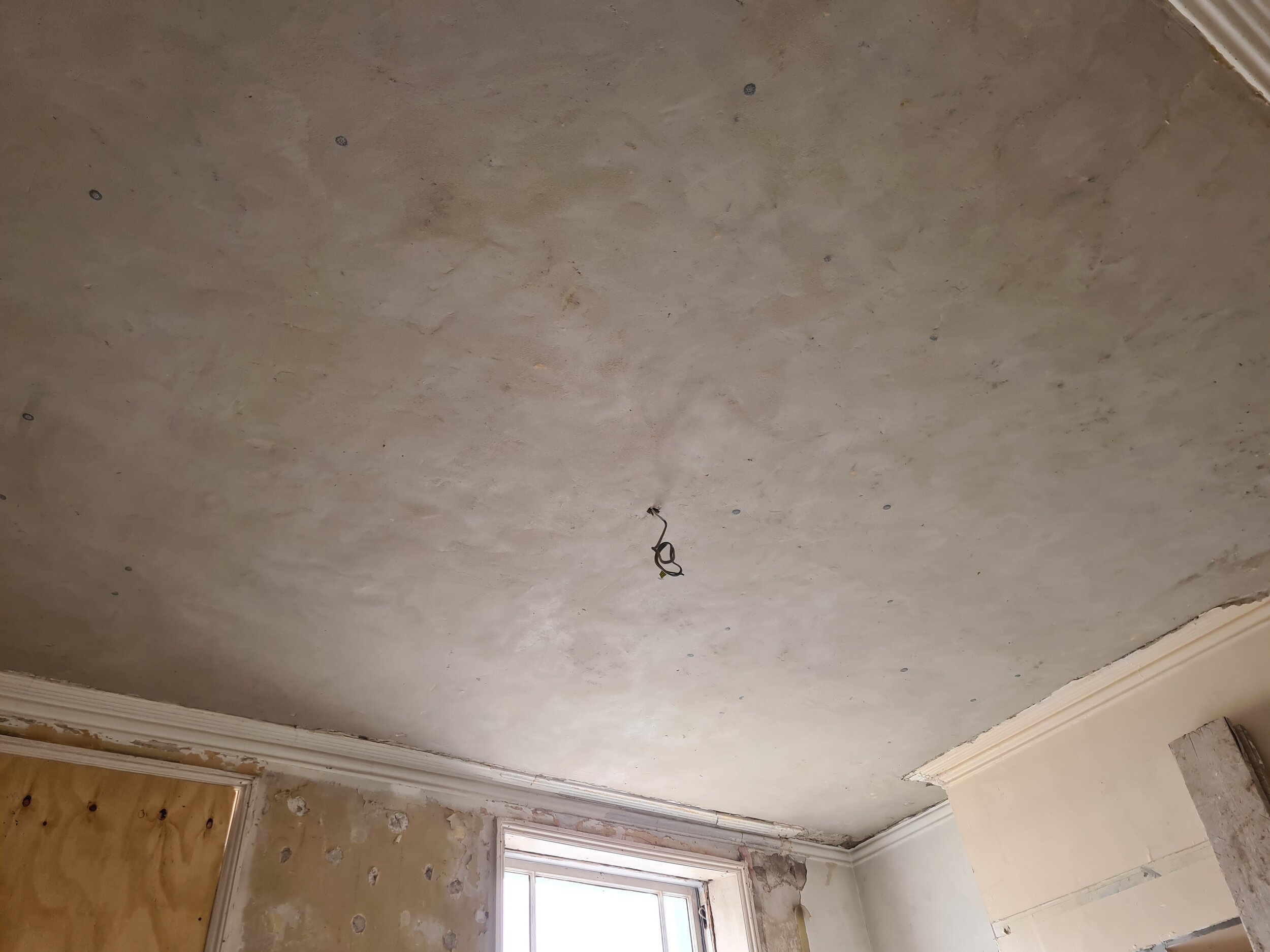
Lath & Plasterwork Specialists
Lath and plaster specialists
Ovolo London Ltd is fortunate to have a vast experience working on Grade I and II listed buildings. We are often requested to survey homes where original plasterwork has been damaged due to water ingress, as an example. We are able to assess the damage, and then offer a solution to repair and restore the area(s) in question. We work alongside insurance companies, conservation officers, architects and builders to co-ordinate realistic work schedules.
Process
Traditional Lath & Plaster is a method which dates back to the early 18th century. This method of plaster works from fixing thick laths (wooden slats) to the floor joists above a ceiling. Three coats of plaster are then applied in the following order:
Pricking Coat: This coat consists for a coarse lime plaster with hair. The hair/fibre is added to the plaster to provide extra strength. The plaster must be pushed through the laths so that the plaster curls behind the laths to hang.
Floating Coat: This coat consists of a medium/coarse lime plaster where hair can be used but isn’t imperative. The plaster is applied and then levelled with a rule before finally being floated and scratched for a finer key in preparation for the final application.
Top Coat: This coat consists of fine lime plaster with no fibres and a very sharp sand. This application is the final of the three and results in a wonderful finish slightly more coarse than a traditional gypsum plaster.
Why Lath & Plaster?
Lime Mortar and Lime Plaster has a very open pore structure which allows the minute transfer of moisture allowing solid masonry and timber frames to remain dry and function as they should.
Lime Plaster and Lime Render has excellent flexural strength and are best suited to historic timber-framed buildings as they work in harmony with the structure during the seasons.
Lime is sacrificial in its nature and designed to be softer than the fabric of the building providing the ultimate care and protection.
Lime is a truly sustainable and eco-friendly material as it allows masonry units i.e bricks and stone to be reused after their previous useful life. Lime mortar wont damage the masonry when removed meaning they can be recycled and used again!



